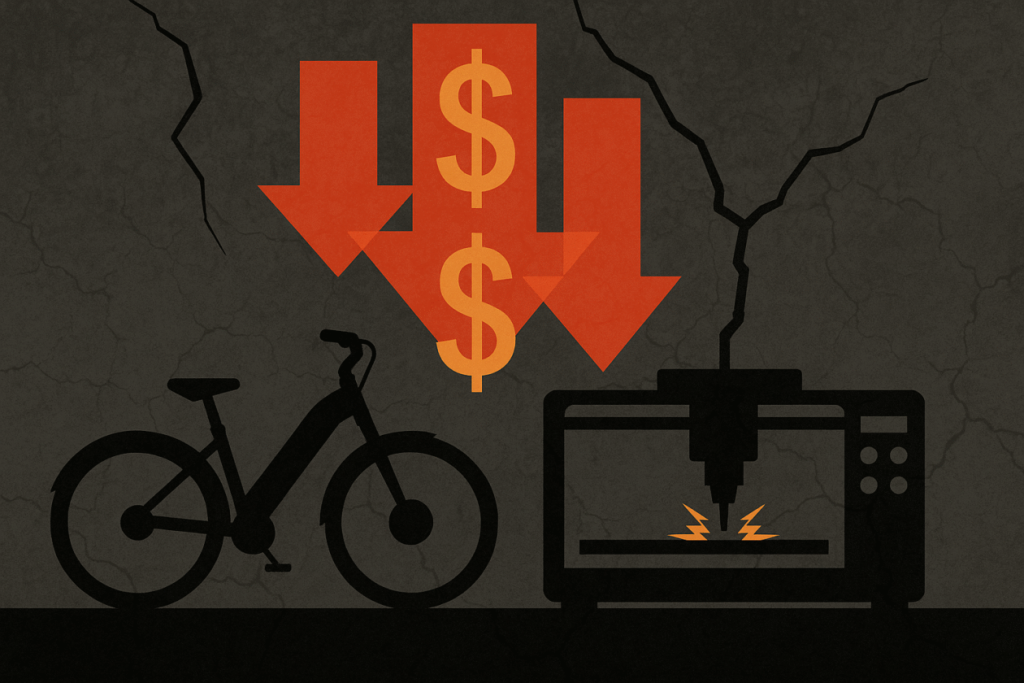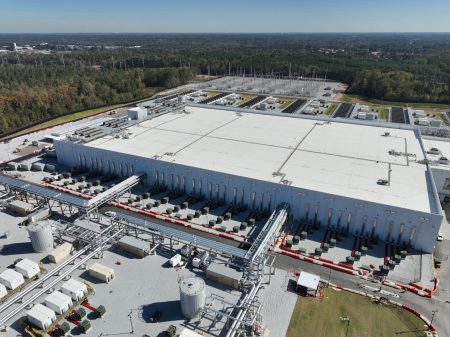The Challenging Reality of Hardware Tech in Seattle’s Ecosystem
In the vibrant tech landscape of Seattle, certain products become so ubiquitous that they seem to define the city itself. Look out onto the Burke-Gilman Trail any day, and you’ll witness a steady stream of Rad Power Bikes cruising by—sleek, practical e-bikes that once earned the nickname “Tesla of e-bikes.” During the pandemic, they became symbols of adaptation and freedom, offering a safe alternative to public transportation while satisfying our collective craving for outdoor activity. Their physical presence throughout the city suggests a thriving business success story, but appearances can be deceiving in the complex world of hardware technology.
Recent developments have sent shockwaves through Seattle’s tech community, revealing the fragility beneath the surface of seemingly unstoppable hardware companies. First came the news that Glowforge, creator of sophisticated 3D laser printers that captivated home hobbyists, entered receivership and underwent restructuring. Then, more dramatically, reports emerged that Rad Power Bikes—a company that had seemed poised for unstoppable growth—might face complete closure. These aren’t isolated incidents but rather manifestations of a persistent pattern in Seattle’s tech history: hardware ventures face unique, often insurmountable challenges in this region known primarily for software innovation. After 25 years covering this ecosystem, industry observers have come to recognize an uncomfortable truth—hardware isn’t just difficult everywhere; it seems particularly difficult to sustain in the Pacific Northwest.
The fundamental challenge of hardware businesses lies in their physical nature—they deal with atoms rather than digits. Software companies like Microsoft can address problems with digital updates, deploying fixes instantly across their user base. But when a Rad Power Bike needs a new tire or has a faulty battery, no amount of code can solve the problem. Instead, companies need complex supply chains, physical service networks, and substantial infrastructure to support their products in the real world. These requirements create layers of complexity and expense that software businesses simply don’t face. However, the struggles of companies like Rad and Glowforge extend beyond these inherent challenges. Their current predicaments stem from two specific traps that ensnared many promising ventures: the misleading market signals created during the pandemic and the double-edged sword of massive venture capital investment.
The COVID-19 pandemic created what might be called a “market mirage” for many hardware companies. Though both Rad and Glowforge existed before 2020, they experienced explosive growth during lockdowns when consumer behaviors shifted dramatically. Suddenly, everyone wanted a Glowforge to pursue creative projects while stuck at home, and e-bikes offered the perfect solution for people avoiding public transit but craving outdoor recreation. This surge in demand wasn’t unique to these companies—Amazon, Zoom, and countless others also expanded rapidly, believing these behavioral shifts represented permanent changes in how we live and consume. Companies made massive investments based on this projection, scaling operations and infrastructure for what seemed like an inevitable future. But as restrictions lifted and life found a new equilibrium, many of these pandemic-era behaviors proved temporary. Companies had built for a reality that no longer existed, leaving them with unsustainable cost structures and diminishing demand. This painful recalibration explains part of the tech industry’s recent wave of layoffs and restructurings, as businesses adjust to post-pandemic realities.
Perhaps even more influential than the pandemic effect was the impact of massive capital infusions. When Rad Power Bikes raised over $300 million in 2021, it fundamentally changed the company’s trajectory and expectations. With that level of investment comes immense pressure to deliver extraordinary returns—to become not just a successful bike manufacturer but a transformative platform changing urban transportation worldwide. This pressure drives companies to expand aggressively into new areas, often beyond their core competencies. Rad, for instance, invested heavily in direct-to-consumer retail locations and mobile service vans—creating an expensive physical infrastructure that might have made sense for a company ten times their size but proved unsustainable for their actual scale. The venture capital model demands exponential growth and “Tesla-sized” outcomes, forcing companies to pursue high-risk strategies rather than building sustainable businesses at a reasonable pace. Had Rad remained focused on being an excellent e-bike maker without the pressure of justifying a $300 million investment, they might have found a sustainable path forward, even if it wouldn’t have satisfied venture capitalists’ appetite for outsized returns.
Seattle’s troubled relationship with consumer hardware extends far beyond these recent examples. The region has witnessed numerous high-profile hardware failures over the decades: Microsoft’s Zune music player that failed to challenge the iPod, Amazon’s Fire Phone that couldn’t compete with Apple and Samsung, and Vicis, whose innovative football helmets garnered praise but couldn’t sustain a viable business. For those who’ve been around long enough, the current situations echo the story of Terabeam from the early 2000s—a company that raised over $500 million to transmit internet data through laser beams, only to sell eventually for a fraction of its investment after confronting the harsh realities of deploying complex physical technology at scale. These examples highlight a persistent pattern in the region: despite Seattle’s undeniable technical talent and innovation, translating that prowess into successful consumer hardware businesses has proven exceptionally difficult. While the city has established itself as the world’s cloud computing capital through giants like Amazon Web Services and Microsoft Azure, its hardware ambitions repeatedly face tough headwinds. In today’s economic climate, with inflation squeezing discretionary spending and consumers becoming more selective with their purchases, products like $1,500 e-bikes and $4,000 laser printers face an especially difficult market reality, regardless of their technical merits or practical benefits.
The sight of Rad Power Bikes zipping along Seattle’s trails remains a testament to the company’s impact on urban mobility, regardless of its business struggles. Their products genuinely improved people’s lives and offered innovative solutions to transportation challenges. But their story, along with Glowforge’s, serves as a sobering reminder that creating revolutionary hardware requires more than just brilliant engineering and enthusiastic consumers—it demands a business model that can weather shifting markets, manage physical complexity, and find sustainability even when the investment climate cools. As Seattle continues to evolve as a tech hub, perhaps these lessons will inform the next generation of hardware innovators, helping them navigate the unique challenges of building physical products in a region that has mastered the virtual world. Until then, we’re reminded that in the world of hardware technology, you can’t simply download a profit margin—you have to build it, one physical product at a time, in a marketplace that rarely forgives miscalculations of scale or timing.















